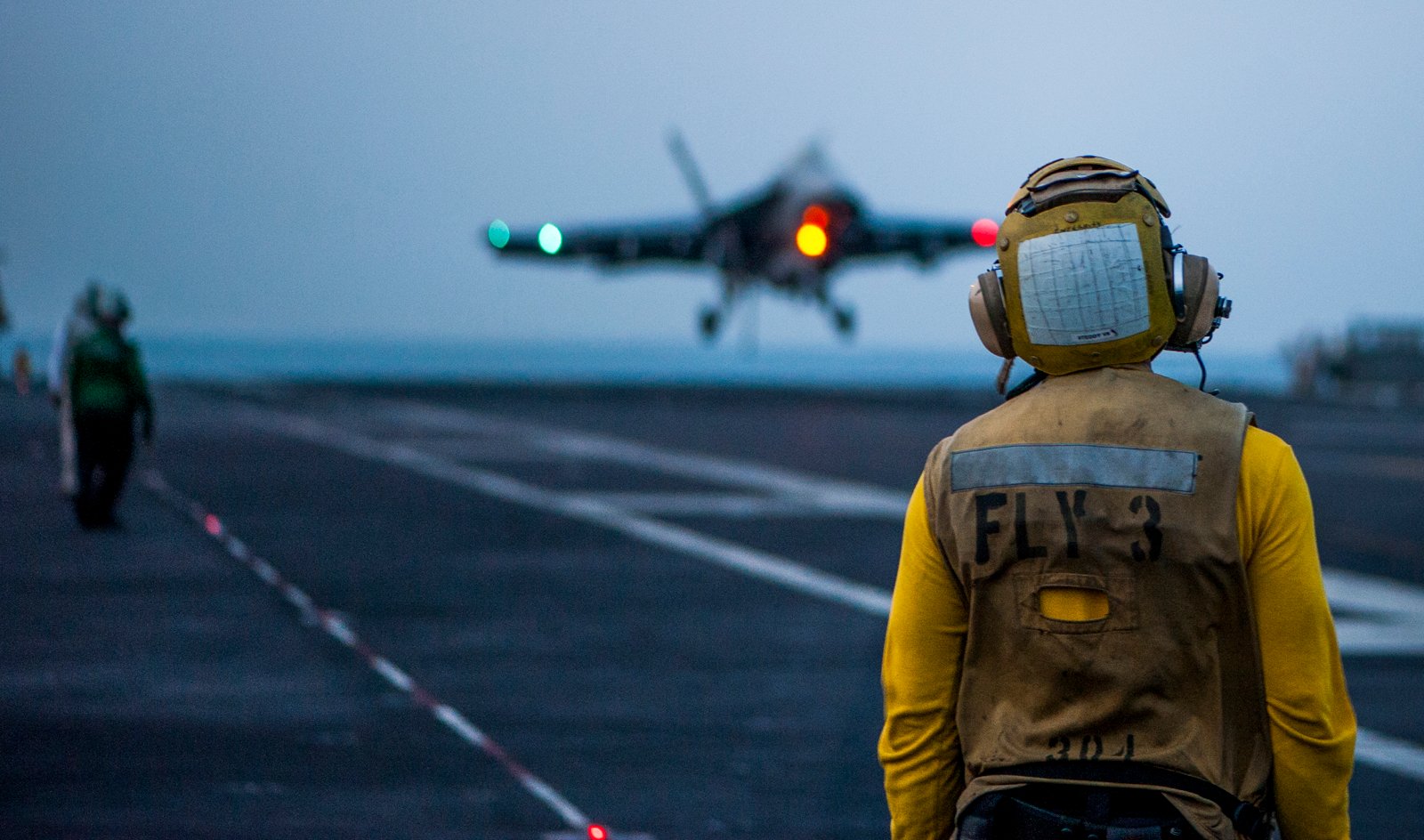
“What kind of navy do Americans want?” columnist George F. Will asked in an August Washington Post commentary. “The answer will determine whether U.S. power can, in [Chief of Naval Operations Adm. Jonathan] Greenert’s formulation, ‘be where it matters, when it matters.’”
On Aug. 8, 2014 aircraft from the aircraft carrier George H. W. Bush (CVN-77) answered that question, conducting the first strikes against Islamic State in Iraq and Syria (ISIS or ISIL) militants in support of the President Barack Obama’s decision to re-engage militarily in Iraq. With only minimal numbers of troops on the ground, the Bush once again demonstrated the operational flexibility and combat effectiveness of sea-based tactical air power to protect important U.S. interests, American citizens, and allies.
As U.S. Congressman Randy Forbes (R-Va.) understands, with the United States having fewer bases overseas from which to launch attacks or just stand watch in volatile regions, aircraft carriers effectively “move U.S. ‘soil’ anywhere in the world.”
CVN ROI
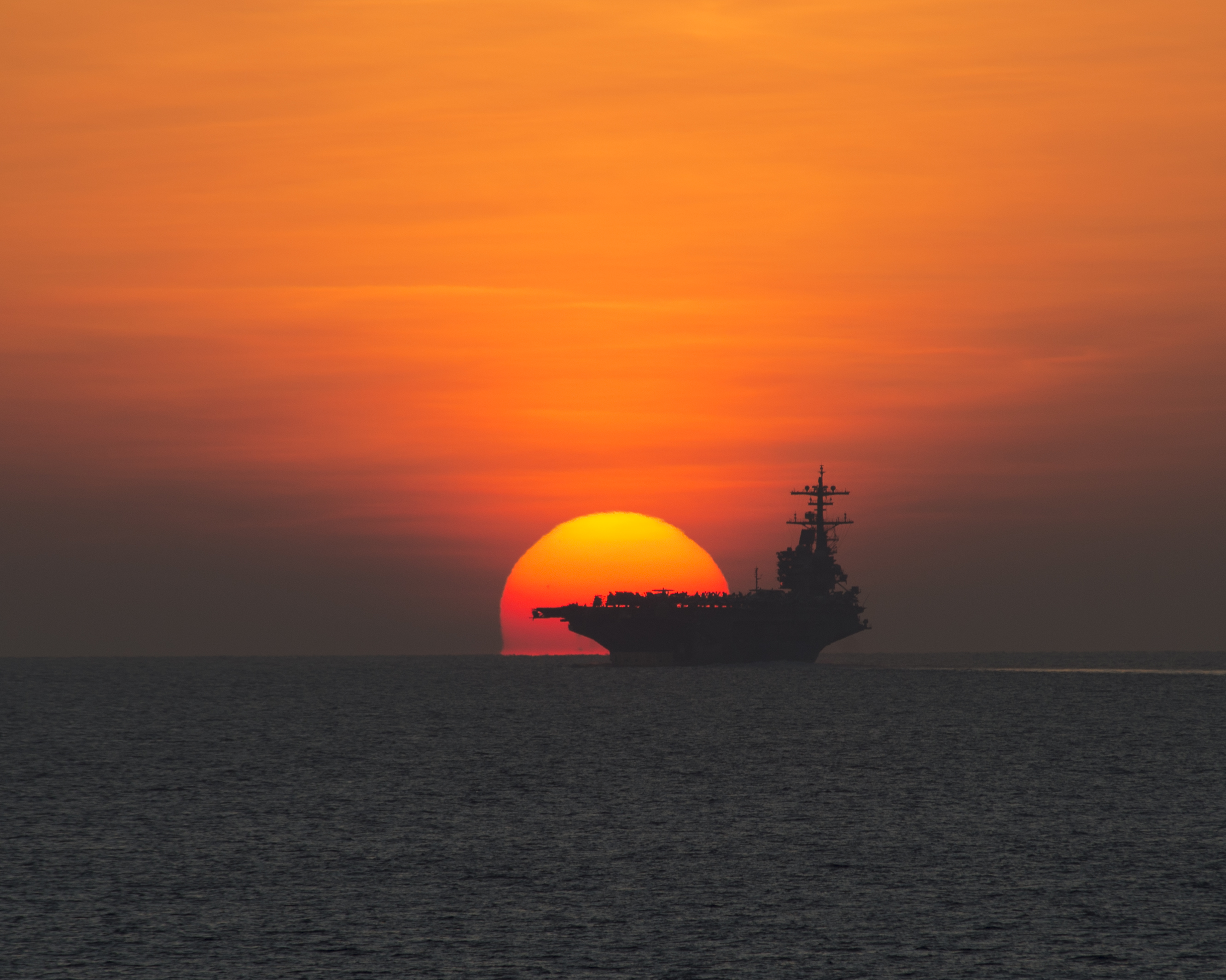
In terms of return on investment, the aircraft carrier is really one of the most cost-effective deals around, defense analyst Loren Thompson explained in a 10 February 2014 Forbes commentary. “The U.S. Navy operates more aircraft carriers than the rest of the world combined, and its carriers are by far the best. But the cost of designing, developing and building such vessels is a minuscule portion of the federal budget. Navy shipbuilding costs will total $15-20 billion annually through the end of the decade, representing 3 to 4 percent of defense spending and less than 1 percent of all federal spending.” Put another way, the $12.8 billion for the Gerald R. Ford (CVN-78) represents about 31 hours of annual federal spending. Shortsighted decisions taken today could hamstring the Navy––and the other four armed services––for decades.
Because it is such a large, long-lived acquisition program, the next-generation Ford-class nuclear-powered aircraft carrier would be a budgetary target even in the best of fiscal times. However, when times get tough, as they are in the late fall of 2014, and as the reverberations from the 2011 BCA continued to ripple throughout the federal government, various pundits and observers contemplate alternatives to the carrier program of record.
In his commentary in September in The Washington Post, Robert J. Samuelson noted, “Defense spending has become just another line item in the budget, increasingly disconnected from our strategic interests and potential threats. It’s a money pot of possible reductions . . .”
While all U.S. defense spending has seen a reduction of some 20 percent since 2010, according to the Center for Strategic and Budgetary Assessments, with across-the-board cuts that affect R&D, acquisition and operations, it is the “big-ticket” items––such as CVNs––that can generate excess zeal to cut more.
Forbes has called for keeping military budgets strong while reining in overall federal spending and to this end, he supported legislation that would avoid automatic defense cuts by shifting those reductions to non-defense programs, including education and entitlement programs. Good luck on that.
Value to the Nation
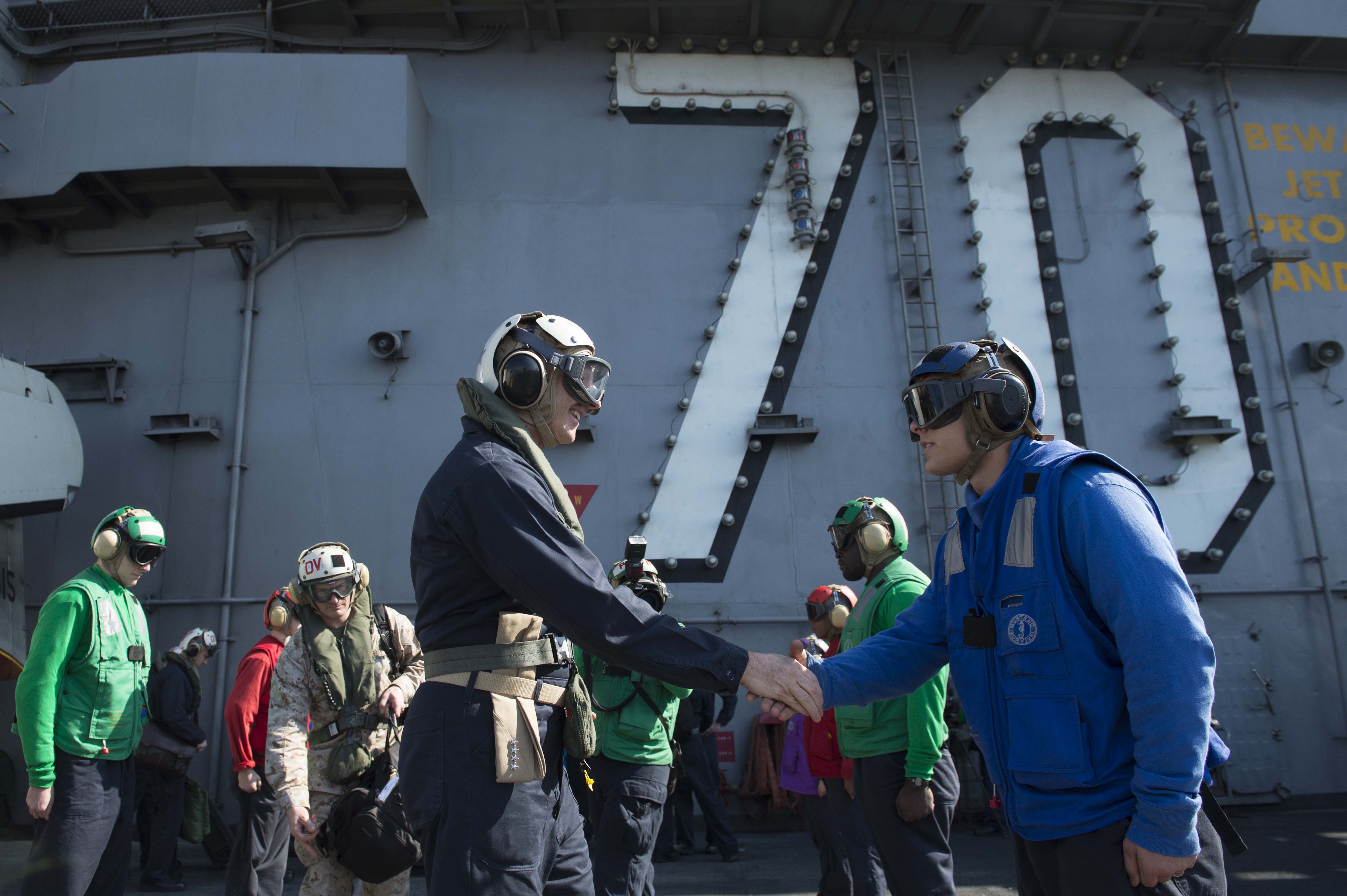
As Congress and the Obama administration look for ways to address defense-spending issues, the value of carrier aviation continues to be underscored by real-world operations. Nuclear carriers and their air wings of some 75 multi-mission aircraft represent a unique warfare capability that––as demonstrated by Bush in 2014––can quickly close to an operating area and provide credible and sustainable combat power. Aircraft carriers and their air wings deliver powerful and timely military effects with significant diplomatic and ultimately warfighting value to our nation.
During an interview with Al Arabiya News, Rear Adm. DeWolfe “Chip” Miller, commander of the Bush carrier strike group (CSG), said the U.S. campaign will protect U.S. interests and blunt ISIS’ progress.
“The president has made our work here clear,” he said. “We are working on supporting humanitarian assistance operations like Mount Sinjar and the Mosul Dam. We are also protecting American citizens and facilities inside Iraq.”
The value of carrier battle group forward presence was proved yet again as the Bush CSG was the only force available to respond during the first ten days of this crisis––where it and when it mattered.
Even first-year econ majors know value is what a person is willing to pay for something. U.S. aircraft carriers, the centerpiece of the carrier strike group are, indeed, valuable, even if measured only by the nation’s willingness to allocate increasingly scarce resources for the first and follow-on carriers of the Ford class. And this value is clearly tied to the peacetime-crisis-wartime contributions that aircraft carriers make to America’s security––what Rear Adm. Michael Manazir, director, Air Warfare (N98), called “responsive and relevant” tactical air power at and from the sea.
There’s a Ford . . .
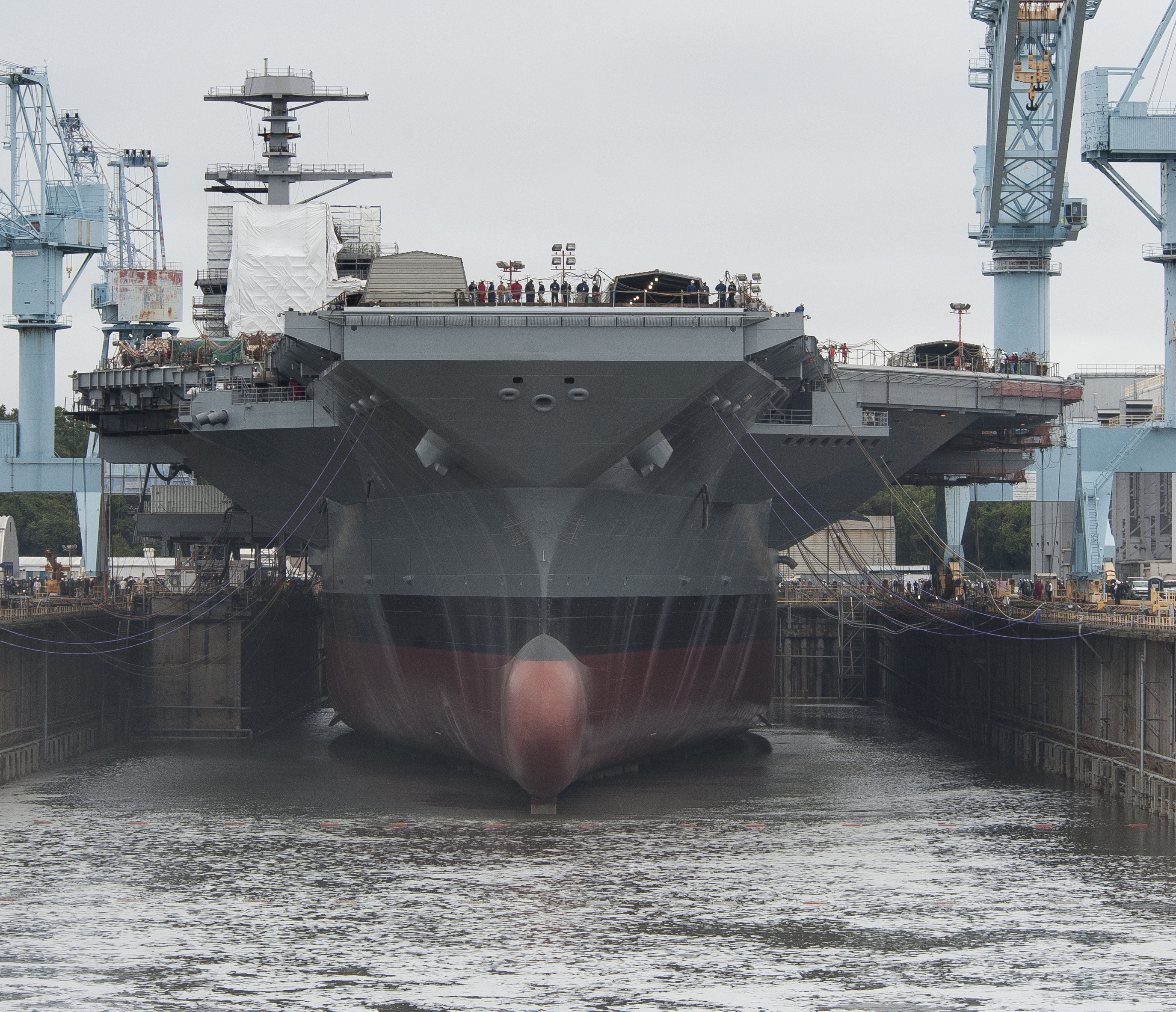
Gerald R. Ford, the first of the ten-carrier Ford-class program was christened at Newport News Shipbuilding on 9 November 2013. Ford is the Navy’s first new-design carrier in almost 40 years and is the result of careful study, development, design, and construction improvements since the last new-design carrier— the USS Nimitz (CVN-68)—joined the operating forces in 1975. Many ship hull sizes and shapes, propulsion systems and flight deck layouts were carefully studied before settling on the new design that incorporates the latest technologies to improve capability and reduce cost over the ship’s 50-year lifetime.
Those attributes also provide the flexibility and growth margin that will keep these ships relevant throughout five-decade lifetimes. Initially the Navy planned an evolutionary approach that would spread the significant cost and risk associated with developing the new technologies over three ships. Before this plan could be executed, then-Secretary of Defense Donald Rumsfeld directed the Navy to use a “leap ahead” strategy that would make a transformational transition to the new ship class in a single ship. The decision necessitated timeline compression for the ship design, development of many emerging technologies, and construction. The depth and breadth of technology insertion is unprecedented and brought increased complexity and risk to the program.
Ford-class ships are designed with upgraded hull, mechanical, electrical and electronics capabilities. The class also incorporates such advanced features as a new, more efficient nuclear propulsion plant, a revolutionary electro-magnetic aircraft launch system, advanced arresting gear, dual-band radar and a nearly three-fold increase in electrical generation capacity when compared with Nimitz-class carriers. Those important technological improvements will increase operational efficiency, lead to significantly higher sortie generation rates and more ordnance on target and facilitate future technologies such as directed energy weapons and un-manned aircraft. At the same time, maintenance and manpower requirements will be greatly reduced, allowing the Navy to reap more than $4 billion dollars in projected life-cycle savings per ship across its 50-year service life. This per-ship savings considers the total operating cost, which includes the acquisition, operations, manpower and disposal cost for each ship when compared with the Nimitz-class ships they will replace.
The $12.8 billion investment for Ford includes about $3.3 billion in non-recurring engineering cost that should be spread over the planned 94-year life of the ten-carrier Ford-class program. (From contract design of CVN-78 to the decommissioning of the last of the class spans nearly a century of operations.) Factor out those sunk costs and the cost of CVN-78 will be approximately $9.5 billion––still a high-visibility item as the Navy and the nation go about looking for ways to meet budget cuts. Although the Government Accountability Office has raised concerns about hitting the $12.8 billion bogey, the Navy stated that the ship will be delivered under the cost cap.
Taking the Long View
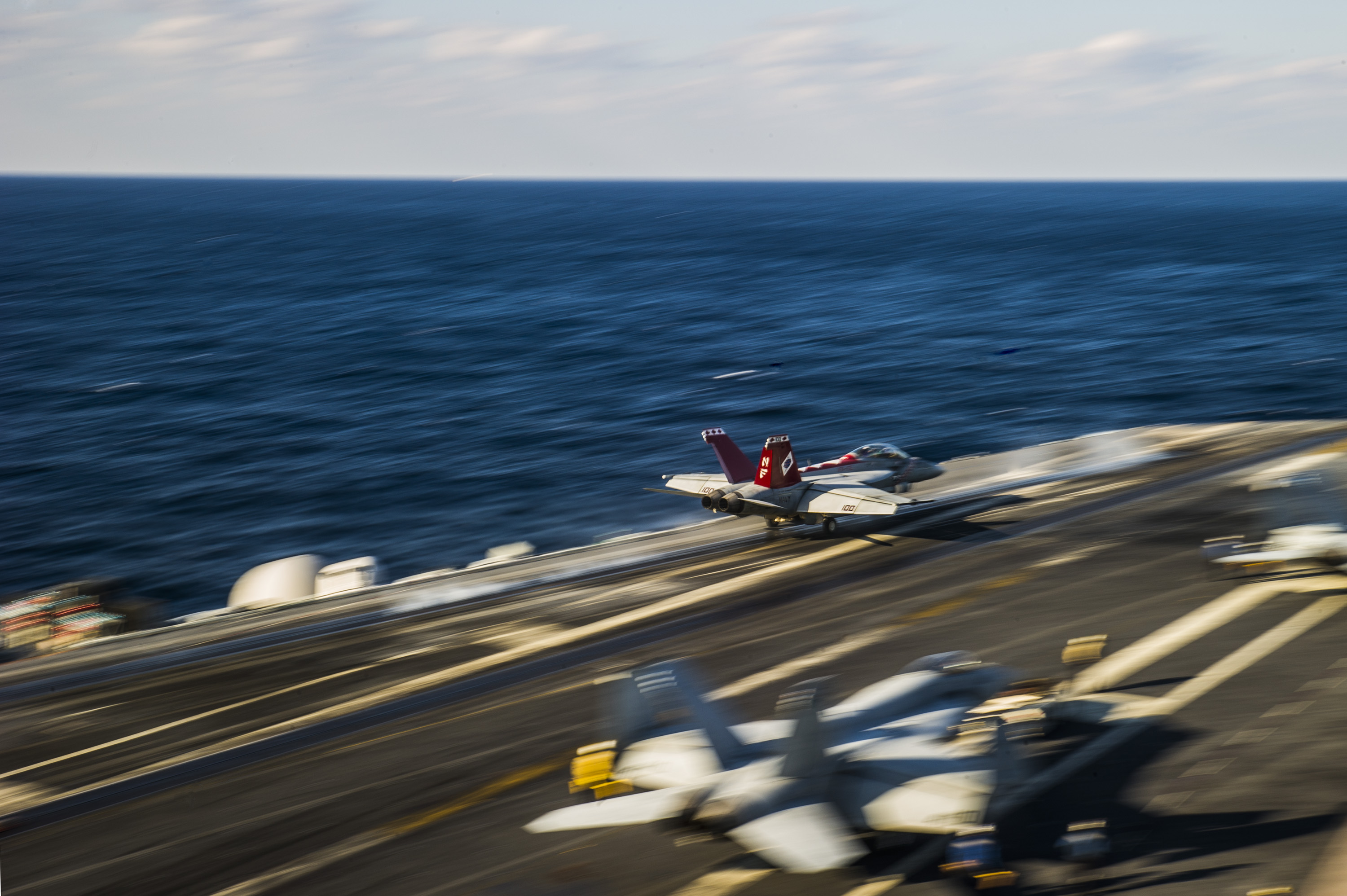
As demonstrated in each of the past 60-plus years, the nation’s “responsive and relevant” aircraft carriers and carrier strike groups are indeed a necessary investment in America’s security.
The aircraft carrier is a carefully vetted, valuable long-term investment and should not become the “money pot” or “bill-payer” for the nation. The multi-dimensional contribution of carrier strike groups to our country’s security and prosperity makes them a necessary expense in the defense budget. An essential obligation or “sine qua non,” the investment in America’s nuclear powered aircraft carrier fleet provides the nation’s most effective general-purpose response-option in all situations that require flexible, responsive and when necessary, lethal air power.




